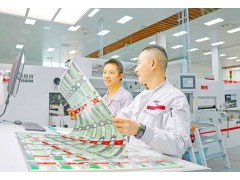News:In recent years, Quanzhou printing industry has focused on high Quality development, the transformation and upgrading of the printing industry have achieved remarkable results. A series of precise measures have helped local printing companies to clarify the direction of progress and transformation. Four entrepreneurs shared their stories of pioneering and taking root in this field over the years.
knowledge link
China's Top 100 Printing and Packaging Enterprises: Since 2003, the list of "China's Top 100 Printing and Packaging Enterprises" has been selected for 20 consecutive sessions. Over the past 20 years, the "Top 100 Chinese Printing and Packaging Enterprises" ranking has objectively recorded the growth and development of large-scale printing and packaging enterprises, continuously tracking the transformation process of China's printing industry in-depth adjustment, transformation and innovation, and has become an important source for all sectors of society to observe the growth of China's printing industry. window.
Quanzhou Printing Industry
●Quanzhou is a strong printing city in Fujian Province. The number of printing enterprises accounts for more than one-third of the province.
●Statistics for 2022 show that there are a total of 897 printing companies in the city, including 111 printing companies above designated size, 30 companies with an output value exceeding 100 million yuan, and 28,700 employees.
●Currently, Quanzhou has 1 national printing and reproduction demonstration enterprise and 7 printing demonstration enterprises in Fujian Province.
●From 2019 to 2022, a total of 9 enterprises in Quanzhou City have successively entered the "Top 100 Chinese Printing and Packaging Enterprises List", becoming the city with the most prefecture-level cities in the country selected as the top 100 printing enterprises for 4 consecutive years.
40 years of deep cultivation, keeping upright, innovating, chasing dreams and transforming
Ke Guobin, President of Aipai Group
In 1983, Ai Pai started his business with a wall calendar. Relying on Hongchao and its brand and exquisite calendars, Aipai has entered a period of rapid development, but it operates according to the development ideas of the traditional printing industry, which limits the development and growth of the enterprise. In 1998, Aipai began to think about the sustainable development and faster growth of the enterprise. This 40-year-old printing company has achieved transformation and upgrading through creative notebooks and the creation of cultural and creative brands.
At the beginning of the transformation, the first question to face is "where to turn". Ke Guobin remembers that Aipai, like many other enterprises undergoing transformation, has gone through a painful period of confusion. In 2002, after many discussions and investigations, I chose to make stationery and notebooks.
"Because the core material of stationery is paper, the related production process has something in common with the original desk calendar ; at the same time, we also see that there is a big market behind small commodities, and there is a lot of room for display." Ke Guobin introduced, at that time Ai Pai started from the ordinary card slot wire ring book, and began to enter the stationery market. In 2005, he participated in the Canton Fair for the first time with his products, and gained the first customer from the Middle East.
To take the step of transformation, it is natural to jump out of the original thinking, otherwise it will eventually return to the original dead end. Aipai, who decided to enter the cultural and creative industry, no longer only focuses on pure printing technology or a certain supporting service, but shifts its focus to product research and development, and thinks about how to better communicate the research and development products to consumers. At that time, Aipai's market positioning was to be a global market and a high-end market. Driven by this idea, Aipai designs and sells its core business of wall calendars, desk calendars, stationery, etc. as gifts. In addition, Aipai has also created two very distinctive sales businesses, namely "Ai Pai Time Collection Hall" and "1983 Ai Pai Creative Art Workshop".
You may think, what kind of tricks can a small notebook play? In Ke Guobin's eyes, the current stationery has developed into a fashion of life. In the Aipai production workshop, the reporter picked up a notebook and found that after it was folded, it could hold business cards and pens. Ke Guobin said that the continuous innovation and upgrading of products is the core competitiveness of enterprises. Up to now, Aipai has more than 150 strategic cooperation customers from more than 80 countries, and launches more than 500 innovative products every year. In the past two years, it has also started to set foot in cultural and creative products to meet the needs of young people.
The practical work of creative transformation can be described as difficult and painful, but Ai Pai has finally put its creative ideas into practice. Thirteen years ago, Aipai spent more than 20 million yuan to purchase a printing machine from Germany, which was the first among domestic counterparts at that time. This year, Aipai purchased a new device, which is also the first in Fujian, which is rare in China. "I think that the printing industry in the future must learn deeply, strive to be the first, and strive for efficiency. No matter what category it is, it must develop to high quality, improve the learning ability of the enterprise, optimize equipment, and keep up with the pace of the times. Keep pace with the times and seize the market.” Ke Guobin said that in the process of enterprise growth, it is necessary to have a strong continuous learning ability and grasp the direction of domestic and foreign trends in different periods. Aipai has always built "learning" into its corporate culture, allowing printing in Aipai's stories to extend infinite possibilities.







